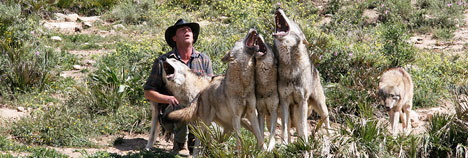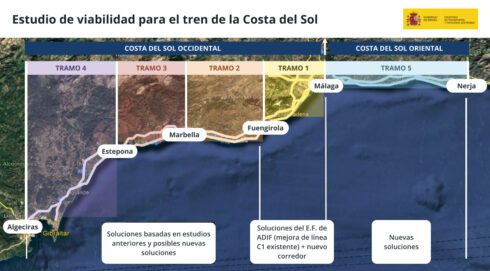Historic Antequera is just a wolf howl away from a fascinating wilderness park in Malaga’s mountainous interior. Arpi Shively goes walkies.
EMILY, our tiny tour guide in safari gear, reaches into the smelly plastic bucket at her feet and brings up a rubber-gloved fist dripping with blood and raw meat. Just a few feet and a wire fence separate us from four tensely poised Canadian timber wolves, lean as greyhounds in their summer coats, amber eyes unblinking.
“Cow lung,” says Emily cheerfully. “Just a little tapas before dinner.”
She flings the meat over the fence where it disappears in a flurry of leaping and snapping jaws.
In contrast, our jaws stay open.
We are walking the winding paths of Lobo Park (lobo means wolf in Spanish), Europe’s only wild wolf reserve, kicking up lion-coloured dust clouds under a fierce August sun. It is just a few kilometres, but a whole world away from the elegant historic town of Antequera, where we have spent a pleasant morning sightseeing and hunting down our own tapas preferences.
To say that Antequera offers a civilized awayday from the Costa del Sol is not just a figure of speech. As early as 2,500BC there was an important Neolithic settlement here, and one of its three remaining dolmens or burial chambers could date from 4,500BC. From the first century AD, the Romans turned ‘Antiquaria’ into a wealthy outpost of empire and left behind traces of exquisite villas and mosaics, while the Moors took over in the ninth century and built the obligatory hilltop castle or Alcazaba.
But Antequera really flowered as a city of intellect and culture during the 16th and 17th centuries, when poets and scholars from all over Spain met to share their knowledge here.
Strolling down the stepped and cobbled streets from the Alcazaba is a great way to see the town, passing its beautifully kept houses, churches and monuments to hunt down tapas in one of the shady plazas.
Restaurante La Espuela’s classic bistro interior is a restful place to sip chilled fino and try typical Antequeran dishes such as porra, a creamy version of gazpacho, or San Jacobo, a roll of pork loin filled with soft cheese. And I cannot resist trying bienmesabe, (literally ‘it tastes good to me’) an alarmingly sweet tart of almonds, eggs, sugar and cinnamon that will surely use up my entire holiday calorie budget in a few delicious mouthfuls.
Time for a siesta? In our dreams. We must forsake the luscious in favour of the lean and mean.
Lupine lore
Antequera is soon just a memory as our car winds through the surprisingly green woodland either side of the A343 into Alora, and within a quarter of an hour we are passing through the ranch-style entrance of Lobo Park.
As we walk up to the big reception/shop/café building, a tall figure in a battered leather Stetson emerges from the shadows and saunters towards us, eyes narrowed against the dazzling light.
Charismatic Daniel Weigend is Andalucia’s answer to Crocodile Dundee. In another life, German native Daniel was a successful advertising creative director whose passion for wildlife also led him to train hundreds of dogs for the German military.
But this was not intensive enough for Daniel, who wanted to work with truly wild animals in natural surroundings. With his partner, Alexandra Steiber, he moved to Andalucía and in 2004 created Lobo Park in 40 hectares of unspoilt Antequeran wilderness.
Since then, he has developed the wolf packs at Lobo Park with steady dedication. Today, Canadian Timber wolves, European wolves and their smaller Iberian cousins, plus four rare Alaskan Tundra wolves (there are only 20 in captivity and 250 left in the wild unlike their more prolific Arctic cousins) roam in four large enclosures, which Daniel describes as ‘wolf heaven.’
“The rugged terrain is perfect for them and they have plenty of room and privacy to roam, hunt and relax,” he points out.
They even have rock pools with fresh water to bathe in, and while they hunt rabbits and other small animals within their territory, they are also fed twice a week. Their meaty diet includes plenty of fibrous goodies such as rabbit ears, to keep their digestion healthy and those famous teeth gleaming white and strong.
Red peril
At the heart of Daniel’s philosophy is respect for the wolves as wild animals with a highly developed social hierarchy, not just German Shepherds with attitude. Because totally wild wolves are so shy of humans that they would never be seen, Daniel receives cubs from zoos and conservation centres in Germany, Austria and Spain as well as from their own packs, as young as 12 days old. The cubs are bottlefed at first and live with Daniel and Alexandra for around four months (“until they have nearly destroyed all the furniture” says Alexandra), before being placed with the pack, still young enough to be accepted by the adults and learn pack ways.
“Unlike most parks in the US and Europe, the wolves here are socialized, not domesticated,” growls Daniel. It is a description that could apply to him just as accurately.
While the group waits in the welcome shade of the lookout platform, Daniel unlocks a small gate in the metal fence and enters the enclosure of the wolves reputed to be the fiercest of all – the Russians.

That Daniel is able to do this at all is thanks to his careful rearing of the cubs and to his own behaviour in the enclosure. “I have positioned myself as a kind of extra-terrestrial pack member, but not the leader,” he says. This way, he does not get hurt and the alpha male keeps his authority. Even so, Daniel is wearing a thick canvas shirt on this sweltering afternoon.
Weighing up to 80 kilorammes and able to clear three metres at a jump, Nadia, the alpha female, with her sharp face and burning amber eyes, jumps up to greet him as he deftly dodges her snapping jaws.
Just the sight of Daniel sitting on a tree trunk in a tight circle of pacing and jostling wolves makes the trip worthwhile, yet he always appears in control as he talks to and handles the wolves.
The four Alaskan Tundra wolves, Nieves, Semjou and Pujok converge in front of our vantage point at the next lookout. They are magnificent in their pristine white fur coats, and seem unperturbed by the high temperatures. Their eyes are neatly rimmed in black, which cuts out some of the glare in their mostly snowy environment. Emily also points out their paws, bigger than those of other wolf species, which act as built-in snowshoes.
How are they coping with this intense heat? Alaskan summers are as extreme as winters, she tells us, adding that the wolves can enjoy a swim in their rock pool whenever they want to cool off. Looks good to me.
We move on now to a much smaller enclosure, where Daniel introduces us to two very special young wolves. One-year-old Kaya, a beautiful polar wolf and son of Nieves and Semjou was born blind. “We cannot put him with the rest of his pack because there is a high risk they will kill him,” says Daniel.
As wolves are intensely social animals one of Daniel’s dogs, Minnie, spent a few months keeping Kaya company (and looking none the worse for it). However, just recently, Daniel acquired an Iberian wolf cub, who they soon discovered was deaf. Now Raul, also a year old, has joined Kaya in the ‘special needs’ enclosure.
Daniel and Emily are looking forward to studying how they get on and maybe even how they might communicate with each other to overcome some practical problems.
Food and swine
Lobo Park does provide contact with some of nature’s gentler species. You can pat the Vietnamese pot-bellied pigs, stroke the deer, fuss over the ferrets or go horse-riding. Still, the wolves are the moody stars of Lobo Park – and Howl Night is their chance to shine.
As darkness closes in over the rolling landscape of the park, fires are lit in the main courtyard and the pre-Howl barbecue gets under way. Gnawing at chicken drumsticks and pork chops under a sky filled with stars brings out the Neolithic ancestor in us all.
It is almost midnight when Daniel leads us on a torchlight walk, revisiting some of the wolves. A natural showman, he keeps up a constant patter that is funny, informative, and reflects his passion for conservation versus hunting.
He positively loves questions and feedback.
The walk over, we pick our way back along the path to the main building. Suddenly and without warning, Daniel cups his hands and howls long and loud across the moonlit valley. We all stand hushed to listen as the wolves respond, mirroring the call exactly, raising the hairs on the back of my neck and, for a moment, turning the warm Andaluz night to ice.
Lobo Park
Ctra Antequera–Alora, (A343, Km 16)
29200 Antequera
Telephone: 952 03 11 07
www.lobopark.com
Open all year, 10am-6pm
Guided wolf tours, Petting Zoo, Horse Riding, Cafeteria and shop
Adults: €7.50
Children: €5.50
Howl Nights May-October, 8pm-11.30pm
Barbecue Supper and Guided Night Tour
Adults: €24
Children (3-12 years old) €20
WHERE TO STAY
Colon Hostal
C/Infante Don Fernando, 29 (952 84 00 10)
www.castelcolon.com
25 rooms with air conditioning, private bath and cable TV, from €40 to €70 per night. Small but well-run and perfectly placed to stroll back to after dinner.
WHERE TO EAT
Best views:
El Escribano, Plaza de los Escribanos 11, (952 70 65 33), Open 11am-11.30pm Tue-Sun. Main courses €8-15. Stylish terrace to one side of Antequera’s most beautiful plaza. Traditional Andalucian food ranges over meat and fish classics, perfect for a romantic lunch.
Best bistro-style:
La Espuela, Calle San Agustin, 1 (off C/Infante Don Fernando) (952 70 30 31), open 1pm-4.15pm and evenings daily. Tapas size ‘media-raciones’ about €3-4 each. Sunlit, classic bistro with small terrace in quiet cul-de-sac. Delicious porro (thick gazpacho) and fried fish platter.







